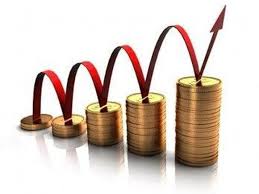


ArmInfo. In Armenia, the GDP per capita grew in the I quarter of 2017 by 8.7% per annum to 325727 AMD per person (USD671/EUR629). According to National Statistical Service of Armenia, in the I quarter 2016, the index of GDP per capita was 299761 AMD, USD613/EUR556 (with annual growth by 3.2%).
According to IMF, the rating of the states by GDP per capita by the results of 2016 published in April 2017, Armenia occupies 115 position (USD3511). Neighbor states of Armenia appeared out of TOP-100: Azerbaijan -106th ($3926), Georgia- 110th (3842). The leader in GDP per capita is a miniature state that lives on rents from offshore and bank incomes and feels great at the same time - Luxembourg - $103199. USA is in TOP-10 on 7th position with $57436. The list ends on South Sudan - 186th $233.
According to NSS, the GDp in Armenia grew in the I quarter 2017 by 6.5% per annum to 972 biilion AMD ($2 billion). However, the quarter dynamics at the background of specific factors to this season, appeared declining- 38.4%.
The permanent population of Armenia according to NSS by April 1 2017 was 2.982 million, in the cities- 1.899 million, in rural areas-1.083 million. In comparison with the same period in 2016 the population of the Republic of Armenia decreased by 12.9 thousand people or by 0.4%, and only in the first quarter of 2017 - by 4.6 thousand people. The population of Yerevan in the annual section increased by 0.2%, amounting to 1.075 million people. 36.1% of the country's total population is concentrated in the capital. The index of vitality (fertility/mortality) in Armenia by April 1, 2017 decreased to 106.2% from 117.8% a year earlier.
Nominal wages in Armenia in the 1st quarter of 2017 was 183643 AMD ($ 378) with annual growth of only 1.1%, against growth of 3.5% a year earlier. In particular, the wages in the public sector totaled 155,125 AMD ($ 319), losing 1.8% to the indicator of the previous year, and 219613 AMD ($ 452) in the private sector, with annual growth of 2.2%. By way of comparison, we note that in the first quarter of 2016 the annual dynamics of salaries in the public sector was up by 1.3%, and in the private sector - by more impressive - 5.4%.